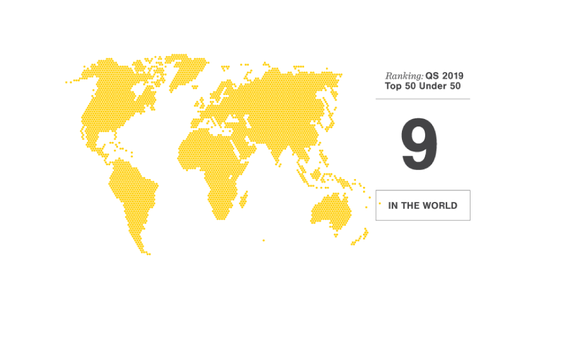Aalto places again among the world’s top ten young universities

Aalto ranked 9th in the newly published QS Top 50 Under 50 Rankings, which lists the world’s best universities established less than 50 years ago. Aalto was the third highest ranking European university on the list.
‘The Aalto community has done exemplary work - the entire community deserves credit for our success,’ says Aalto University President Ilkka Niemelä.
In just seven years, Aalto has taken giant strides in many areas. One of these is internationalisation. According to a comparison published at the beginning of the year, Aalto ranks 55th in the world’s list of most international universities. During the period 2010 through 2017, the number of peer-reviewed international publications generated at Aalto has increased by 50 per cent. At the same time, the number of Master’s degrees by foreign citizens has doubled, the share of international doctoral students has grown by 12 percentage units and the share of international professors by 18 percentage units.
There are now four times as many recipients of competitive European Research Council granted funding at Aalto than there were in 2010. One of these recipients is Professor Orlando Rojas, who came to Aalto from the United States. He works at the School of Chemical Engineering developing the future’s materials, which will help in addressing major challenges related to water use, carbon dioxide capture, food and advanced materials.
‘I hope that my work will prove to be a turning point in the utilisation of the unique characteristics at the nano and micro levels of lignocellulose components. These will be the most important materials in future bioeconomy,’ Rojas says.
Top three from Asia
This year, as in past years, Singapore’s Nanyang Technological University placed first in the ranking. The Hong Kong University of Science and Technology (HKUST) ranked second and KAIST - Korea Advanced Institute of Science and Technology third. The top ranking European university, Paris Sciences et Lettres (PSL) ranked 4th overall.
The ranking is based on the QS World University Rankings general ranking, and its purpose is to shine a light on universities the performance of which promises them a spot among the world’s best in the future. Aalto placed 140th in the general ranking, which means it is among the top 1 percent of the world's universities.
QS (Quacquarelli Symonds) is one of the world's most important university rankings. In addition to the general ranking, it produces rankings in specific fields of science and regional rankings.
Last year Aalto ranked 7th in the QS Top 50 Under 50 Rankings.
Read more:
QS Top 50 Under 50 Ranking 2019 (topuniversities.com)
Read more news

Meet Patrick Fleming, assistant professor of structural and architectural engineering
Fleming believes making the most of existing buildings is key to reaching a sustainable future.
Pauliina Ilmonen appointed as Dean of the Aalto University School of Science
Ilmonen will start her five-year term on 1 June 2026
Meet the new ELLIS Institute PIs: Azade Farshad advances AI for medical applications
Farshad’s research background is in computer vision and generative models.






